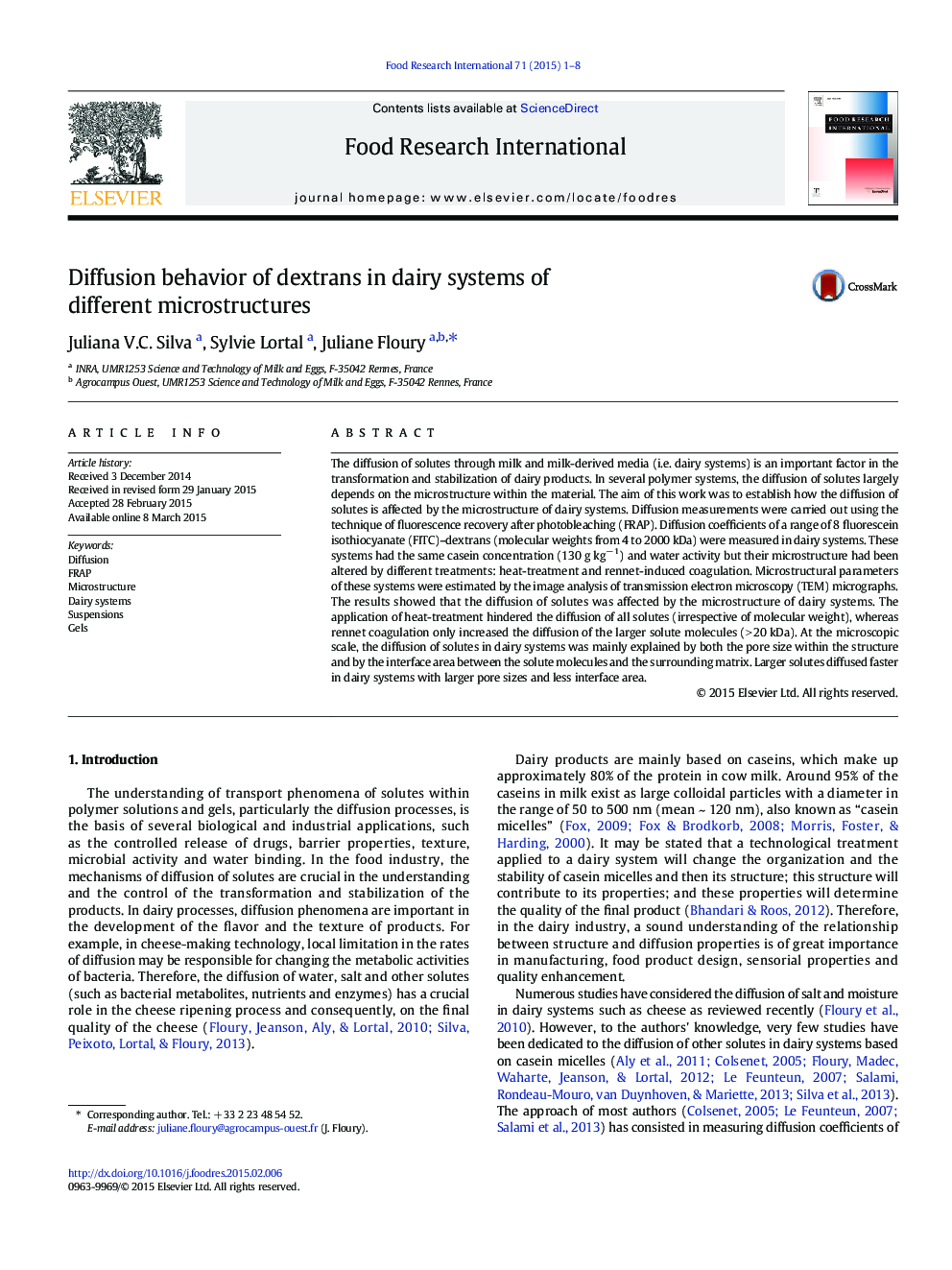| Article ID | Journal | Published Year | Pages | File Type |
|---|---|---|---|---|
| 4561533 | Food Research International | 2015 | 8 Pages |
•The diffusion of solutes in dairy systems was studied by the FRAP technique.•Both heat-treatment and coagulation of dairy systems influenced solute diffusion.•Diffusion behaviors of solutes and system microstructural parameters were related.•Pore size and interface area solute/matrix explained diffusion behavior.
The diffusion of solutes through milk and milk-derived media (i.e. dairy systems) is an important factor in the transformation and stabilization of dairy products. In several polymer systems, the diffusion of solutes largely depends on the microstructure within the material. The aim of this work was to establish how the diffusion of solutes is affected by the microstructure of dairy systems. Diffusion measurements were carried out using the technique of fluorescence recovery after photobleaching (FRAP). Diffusion coefficients of a range of 8 fluorescein isothiocyanate (FITC)–dextrans (molecular weights from 4 to 2000 kDa) were measured in dairy systems. These systems had the same casein concentration (130 g kg− 1) and water activity but their microstructure had been altered by different treatments: heat-treatment and rennet-induced coagulation. Microstructural parameters of these systems were estimated by the image analysis of transmission electron microscopy (TEM) micrographs. The results showed that the diffusion of solutes was affected by the microstructure of dairy systems. The application of heat-treatment hindered the diffusion of all solutes (irrespective of molecular weight), whereas rennet coagulation only increased the diffusion of the larger solute molecules (> 20 kDa). At the microscopic scale, the diffusion of solutes in dairy systems was mainly explained by both the pore size within the structure and by the interface area between the solute molecules and the surrounding matrix. Larger solutes diffused faster in dairy systems with larger pore sizes and less interface area.
